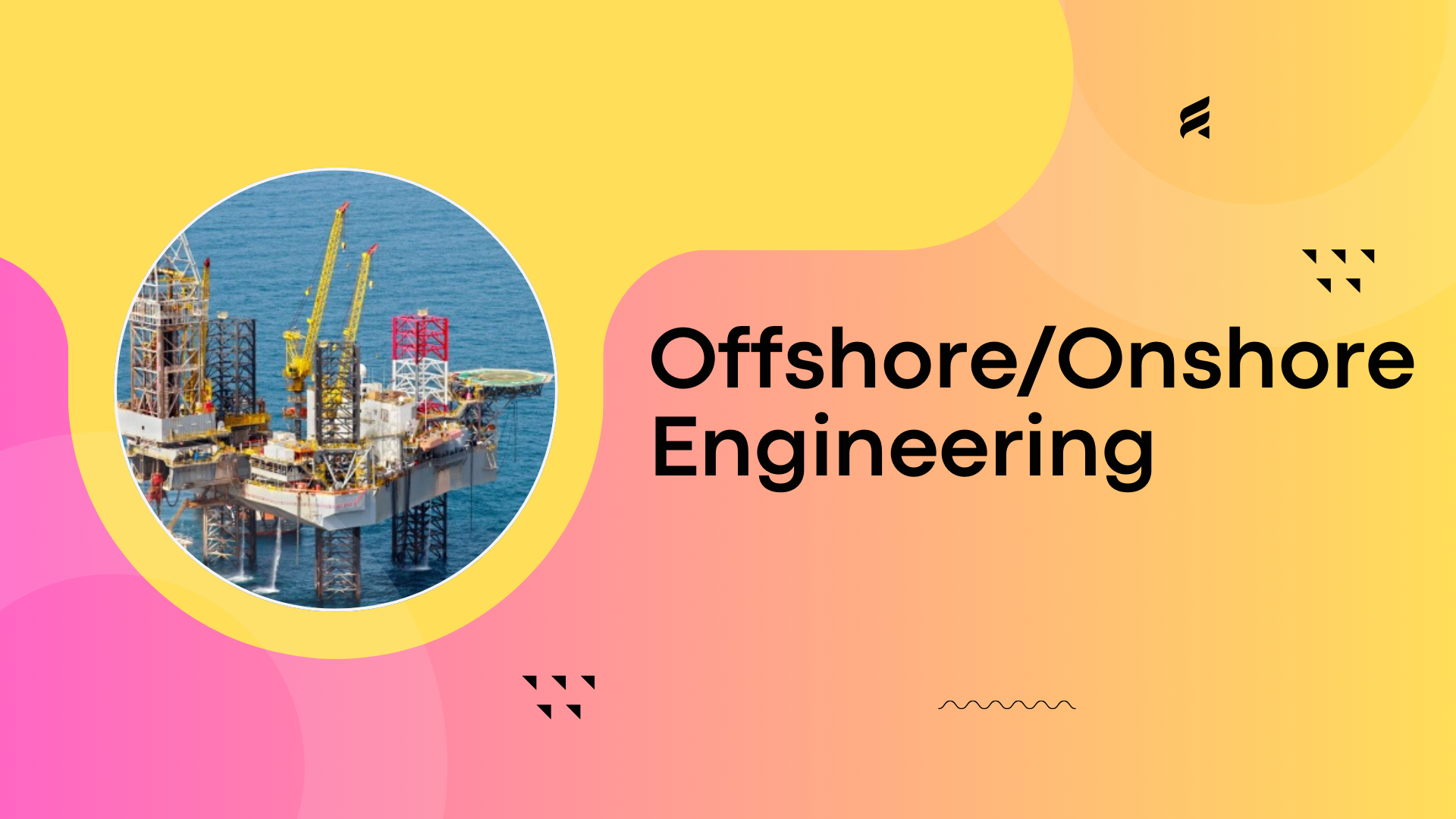-
Новости
- ИССЛЕДОВАТЬ
-
Страницы
-
Группы
-
Мероприятия
-
Reels
-
Статьи пользователей
-
Offers
-
Jobs
-
Форумы
-
Кинозал
Offshore and Onshore Engineering: Building the Foundations of Modern Infrastructure

The foundation of human development has always been engineering, which builds infrastructure, energy systems, bridges, and other structures that foster creativity and growth. Offshore and onshore engineering are two engineering specialties that are very important in the modern industrial world because of their roles in energy generation, maritime operations, and industrial infrastructure.
Despite their connections, each field has its own set of problems, tools, and specialties. These engineering specialties collaborate to power towns and industries around the world, from refineries on land to oil rigs in the middle of the ocean.
The definition, scope, applications, distinctions, difficulties, and prospects of offshore and onshore engineering will all be covered in this blog.
Understanding Offshore Engineering
Offshore engineering focuses on designing, constructing, and maintaining structures and systems located in marine or ocean environments. These projects are often linked to energy production and maritime activities. Engineers in this field must account for extreme weather conditions, ocean currents, water depth, corrosion, and environmental sustainability when working on projects.
Key Applications of Offshore Engineering
1. Oil and Gas Platforms
Offshore engineering is most recognized for oil and gas exploration platforms in deep-sea and shallow-water regions. These platforms are designed to drill, extract, and transport crude oil and natural gas from under the seabed.
2. Renewable Energy Systems
With the global push for sustainability, offshore wind farms have become a booming sector. Engineers design and build turbines capable of withstanding the harsh marine environment to generate clean energy.
3. Subsea Engineering
Subsea pipelines, control systems, and underwater equipment are crucial for transporting extracted resources to onshore facilities. Offshore engineers develop and maintain these highly specialized systems.
4. Maritime Infrastructure
This includes offshore ports, shipyards, and terminals for cargo and passenger transport. Such facilities are essential for global trade.
Skills and Expertise Required
Hydrodynamics, material science, geotechnical engineering, and structural engineering are all necessary for offshore engineers. Additionally, they use sophisticated software for simulations and depend on remotely operated vehicles (ROVs) and underwater robotics for maintenance and inspection.
Understanding Onshore Engineering
Onshore engineering involves designing, building, and maintaining facilities, plants, and infrastructure located on land. While offshore projects bring resources from the ocean, onshore engineering ensures these resources are processed, distributed, and utilized effectively.
Key Applications of Onshore Engineering
1. Refineries and Petrochemical Plants
Crude oil and natural gas extracted offshore are transported to onshore refineries where they are processed into fuels, chemicals, and other products.
2. Power Plants
Onshore engineering plays a central role in designing and constructing power plants, whether based on fossil fuels, nuclear, or renewable energy sources like solar and wind.
3. Industrial Infrastructure
This includes factories, manufacturing plants, and processing units for various industries such as steel, cement, and fertilizers.
4. Transportation and Storage Systems
Pipelines, storage tanks, LNG terminals, and distribution systems are part of onshore engineering, enabling the efficient movement and storage of energy and materials.
Skills and Expertise Required
Strong proficiency in civil, structural, mechanical, and process engineering is required of onshore engineers. They concentrate on efficiency optimization, safety regulations, piping systems, and plant design.
Challenges in Offshore and Onshore Engineering
Offshore Challenges
a. Harsh Environments: Saltwater corrosion, storms, and high waves damage structures.
b. High Costs: Offshore projects require specialized ships, platforms, and equipment.
c. Safety Concerns: Working at sea increases the risk of accidents, demanding strict safety protocols.
Onshore Challenges
a. Land Use and Space Constraints: Urbanization often limits available land for projects.
b. Environmental Regulations: Onshore facilities must comply with emissions and waste disposal standards.
c. Maintenance and Upgrades: Large-scale plants require regular shutdowns for upgrades, impacting production.
Integration of Offshore and Onshore Engineering
These two fields are not isolated—they work in a cycle. For example:
a. Offshore extraction platforms gather crude oil and natural gas.
b. Subsea pipelines transport them to onshore facilities.
c. Onshore refineries and plants process the resources into usable products like fuel, plastics, and fertilizers.
d. Distribution systems then deliver these products globally.
Thus, offshore and onshore engineering are two sides of the same coin, supporting each other to maintain global energy and industrial supply chains.
The Future of Offshore and Onshore Engineering
With global energy demands rising and sustainability becoming a priority, both offshore and onshore engineering are evolving.
1. Renewable Energy Integration
Offshore wind, tidal, and wave energy systems are expanding, while onshore solar and hybrid plants are becoming mainstream.
2. Digital Transformation
Use of AI, digital twins, and advanced simulation tools are enhancing both offshore and onshore project design and maintenance.
3. Sustainability and Green Engineering
Engineers are developing eco-friendly solutions to reduce carbon emissions, prevent oil spills, and adopt clean technologies.
4. Automation and Robotics
Autonomous drones, robotic welders, and smart sensors are reducing human risk and improving efficiency in both environments.
5. Global Energy Transition
As fossil fuels gradually give way to cleaner energy, offshore and onshore engineers will play a critical role in designing future-ready infrastructure.
Conclusion
The foundation of contemporary industrial and energy systems is offshore and onshore engineering. Onshore engineering makes sure that resources are processed, stored, and disseminated for daily usage, whereas offshore projects utilize the resources that lie beneath our oceans and seas. Although each sector has its own set of difficulties, there are also countless chances for creativity.
Offshore and onshore engineering will continue to play a key role in sustaining economies, tying together businesses, and forming a sustainable future as the globe moves toward renewable energy and smarter infrastructure.
- AI
- Vitamins
- Health
- Admin/office jobs
- News
- Art
- Causes
- Crafts
- Dance
- Drinks
- Film
- Fitness
- Food
- Игры
- Gardening
- Health
- Главная
- Literature
- Music
- Networking
- Другое
- Party
- Religion
- Shopping
- Sports
- Theater
- Wellness


